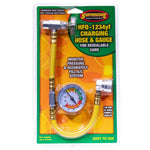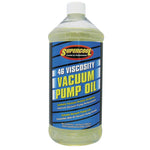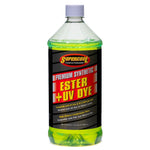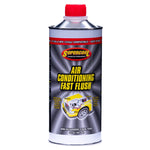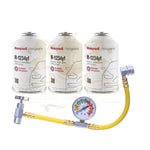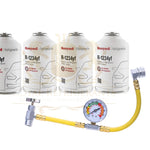You have no items in your shopping cart.
134a Refrigerant – A Key Cooling Agent in Modern Systems
Introduction
R-134a, also known by its chemical name 1,1,1,2-Tetrafluoroethane, is one of the most commonly used refrigerants in today’s air-conditioning and refrigeration systems. It was introduced as a replacement for R-12 (dichlorodifluoromethane) after scientists discovered the harmful effects of chlorofluorocarbons (CFCs) on the ozone layer. 134a belongs to the hydrofluorocarbon (HFC) family, which does not contain chlorine and therefore has zero ozone-depletion potential.
Chemical and Physical Properties
-
Chemical formula: C₂H₂F₄
-
Molecular weight: 102.03 g/mol
-
Boiling point: –26.3°C
-
Appearance: Colorless, non-flammable, and odorless gas under normal conditions
R-134a is stable, non-corrosive, and compatible with most common materials used in refrigeration systems. These properties make it suitable for both domestic and commercial applications.

Applications of R-134a
Automotive Air Conditioning:
R-134a became the global standard refrigerant for car A/C systems after the phase-out of R-12.
Refrigeration Systems:
It is widely used in domestic refrigerators, commercial freezers, and vending machines.
Aerosol Propellants:
R-134a serves as a propellant in medical inhalers and certain aerosol sprays because of its non-flammable nature.
Heat Pumps and Chillers:
Many industrial and commercial heat pump systems use R-134a due to its excellent thermodynamic properties.
Environmental Impact
While R-134a does not harm the ozone layer, it has a high Global Warming Potential (GWP) of around 1300, meaning it contributes to climate change if released into the atmosphere. Due to this, many countries are gradually phasing it out under environmental agreements like the Kigali Amendment to the Montreal Protocol.
Newer, eco-friendly refrigerants such as R-1234yf are being introduced as low-GWP alternatives to R-134a in automotive and other applications.
Safety and Handling
R-134a is considered safe when handled properly. However:
-
It should always be used in well-ventilated areas.
-
Direct contact with liquid R-134a can cause frostbite due to rapid evaporation.
-
It should not be released directly into the atmosphere.
Conclusion
R-134a has played a vital role in the evolution of refrigeration and air-conditioning technology. It successfully replaced ozone-depleting CFCs and helped reduce environmental damage. However, because of its high GWP, the industry is now moving toward next-generation refrigerants that are more sustainable and climate-friendly.
R-134a will remain an important part of refrigeration history — a bridge between the harmful CFC era and the green, low-emission future.
 English
English

